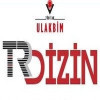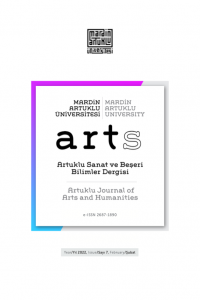Research Article
Aim & Scope
ARTS aims to create a space for research, discussion, criticism and questioning at the intersection of arts and humanities. From this point of view, it comes out with the aim of presenting the works of scientists, artists and researchers, which are related to the subjects, themes and disciplines in this intersection, to the relevant circles and to create a new publicity in this context. Sharing the results of research, examination and project studies prepared for this purpose with the target publics will be the most appropriate concrete output of ARTS.
Academic studies in Turkish, English, German and French are accepted to ARTS. Each issue may include translation studies, which are determined or selected by the editor or editorial board.
Humanities studies with an artistic perspective are included in our journal. In this context, instead of interpreting art within a purely technical and closed terminology, it is preferred to read it from within the epistemology of human science and therefore to observe its social context.
Author Guidelines
1. Academic papers, written in Turkish, English, German and French are accepted in ARTS. Each issue can include translation studies, which are determined or selected by the editor or editorial board. Besides, work reviews, book introductions or meetings/galleries/exhibitions/festival reviews, interviews 1500-3500-word can also take place.
2. Manuscripts should be between 3500 - 8500 words, including references. Explanatory notes should be numbered in the text and placed as footnotes at the bottom of the relevant page. Each study should include 150-200 words in Turkish and English Abstract (with at least three and at most six keywords). The study should be saved in a word processor (.docx extension) based on the article format on the "submit article" tab on the DergiPark page of ARTS. Manuscripts should be written in Century Gothic font, 1.5 line spacing, and 11 points, and footnotes should be written in 10 points and 1 line spacing.
3. Before submitting their work for evaluation, writers should comply with certain formal and bibliographic rules. In order to do this, you should use the article format in the "submit article" tab of ARTS DergiPark; The rules of submission and publication of the manuscripts that are in the same tab and determined by the ARTS editorial board should also be followed.
4. As a result of the preliminary examination by the editors, in case of any contrary situation, the study is returned to the authors. In addition, studies that require revision as a result of the referee evaluation and editor's decision are sent back to the authors. In these cases, the authors are required to make the necessary corrections in line with the findings made by the editor and send their work again. The work of the authors who do not submit the requested corrections within fifteen (15) days, unless otherwise stated within the editorial planning, shall be rejected.
5. Authors are compulsory to prepare their academic studies in accordance with ethical rules and to submit them through similarity (plagiarism) programs before sending them to our journal.
6. Authors should write their names in full while following the "submit article" steps, pay attention to the fact that their titles are up-to-date in the DergiPark system, write the titles of their work with only the first letters of the words in the title capital, in addition to the Turkish title and summary of their work, written in English and / or other languages. should definitely add the title and its abstracts, and pay attention to the rule that keywords should be written in strictly lowercase letters even if a special name is included.
7. The authors of the refereed process should fill in, sign and scan the documents related to their publication in the journal and upload them to the DergiPark system. The copyright of the manuscripts approved by the Editorial Board belongs to Mardin Artuklu University Artuklu Journal of Arts and Humanities (ARTS); cannot be published elsewhere. Authors are not paid royalties.
8. ARTS in-text Reference and Bibliography Regulation Rules
In the works published in ARTS, in-text references, citation, and bibliography should be presented in accordance with the following description and examples in which the APA rules are made in Turkish by the decision of the Editorial Board.
8.1. In-text Reference
• In the case of a general reference and reference to the whole source, it is sufficient to write the year of the author and the source: (Özön, 2013).
• If a specific page in the source is cited or written from a specific part of the source, the source should be written with the page as follows: (Özön, 2013, p. 79).
• If the referenced text has three to five authors, the surnames of all authors should be written when giving the first reference: (Kaya, Atılgan and Solmaz, 1995). In later references, it is sufficient to write the surname of the first author as in the following example: (Kaya vd., 1995). If the number of authors is six or more, only the first author's surname should be written in the first use and the others should be abbreviated as “vd.” (Altun vd., 2010).
• Names of all films, books, magazines, newspapers, TV programs and works of art should be written in italics. If the names of the films are not mentioned in the text when they are used first, the director should be written in brackets first, then the year: Reservoir Dogs (Reservoir Dogs, Quentin Tarantino, 1992), Akrebin Yolculuğu (Ömer Kavur, 1997). If necessary, the following information may also be included: The Big Sleep (The Big Sleep, Howard Hawks, Warner Bros, USA, 1945).
• It should be in the form of a glossary item (“Substance name”, Date) in the text: (“Mardin Melek Sineması”, 2015).
• All personal interviews made by e-mail, telephone or face to face should be shown in the text. Example: Nadine Labaki (personal interview, 6 March 2019) or (Nadine Labaki, personal interview, 6 March 2019). These talks are not included in the bibliography.
• Classical works should be written as in this example if their original histories are known: (Freud, date of original work / date of the work), (Freud, 1930/1998).
• If the author has reached the main source in which the text is cited by another author (that is to say, using the secondary source), the reference should be given as follows: (aktaran Kazancı, 2013, s. 29) or (Parsons’tan aktaran Aktay, 1995, s. 105).
• Direct quotations made in the text, which are longer than 40 words, are 2 cm left and right. inset, 1 line spacing, 10 points and without quotation marks. When quoting directly from the original source, the extracted word (s) and/or sentence (s) should be indicated by three points […] in square brackets. Direct quotations of less than 40 words in the text are double-quoted. In quotations in double quotation marks, a single quotation mark should be used if a word or sequence of words is to be highlighted using quotation marks.
8.2. Preparation of Bibliography
• The sources should be written in alphabetical order, without discriminating between books, magazines, internet resources and all other sources.
• The works of an author with the same date should be written in the bibliography and in the text as follows: (Atasay, 2001a) and (Atasay, 2001b).
• If the bibliography includes many works of the same author, all the source works should be written from the old date to the new date.
• For sources without a year, four underscores (____) should be used.
• If the original dates of classical works (such as works by authors such as Smith, Hobbes) are known, the end of the showing in the bibliography should be added as follows: (The original work is dated 1744).
• "Publisher", "publications", "books" and etc. should not be added while stating the publisher where the source used is printed. Example: Istanbul: Metis or London: Routledge.
• If there are electronic sources, DOI (digital object identifiers) numbers should be written. If there is no DOI number in electronic sources, the URL should be used: (http://www…). Hyperlinks in URLs must be removed.
8.3. Sample Bibliographic Writings
(The categorization of the examples was made to provide a detailed explanation to the authors. Therefore, the categorization as below should not be used in the texts.)
• Single Author Book
Author’s Surname, First Letter of The Author's Name. (Year Released). The Name of The Work (If There Is, Which Edition). Publishing Location: Publisher.
Abisel, N. (2010). Sessiz Sinema (4. Edition). Ankara: De Ki.
Zizek, S. (2009). Matrix: Ya da Sapkınlığın İki Yüzü. (Trans. B. Turan). İstanbul: Encore.
• Multi Author Book
Surname of The First Author, First Letter of The First Author's Name., Surname of The Second Author, First Letter of The Second Author’s Name., ... and Surname of The Last Author, First Letter of The Last Author's Name. (Year Released). The Name of The Work (If There Is, Which Edition). Publishing Location: Publisher.
Eco, U., Martini, C. M., Proctor, M. ve Cox, H. (2012). Belief or Nonbelief? A confrontation. New York: Skyhorse.
• Compilation Book
Surname of The Editor, First Letter of The Editor's Name. (Ed.). (Year Released). The Name of The Work (If There Is, Which Edition). Publishing Location: Publisher.
Bottomore, T. ve Nisbet R. (Ed.). (2002). Sosyolojik Çözümlemenin Tarihi (Trans. A. Uğur ve M. Tuncay). Ankara: Ayraç.
• Translation Book
Author’s Surname, First Letter of The Author's Name. (Year Released). The Name of The Work (Trans. First Letter of The Translator's Name. Surname of The Translater). Publishing Location: Publisher.
Corrigan, T. (2007). Film Eleştirisi (Trans. A. Gürata). Ankara: Dipnot.
• Institution Book
Institution’s Name. (Year Released). The Name of The Work (If There Is, Which Edition). Publishing Location: Publisher.
TÜBİTAK. (2002). 21. Yüzyılda Bilimsel Yayıncılık: Hedefler ve Yaklaşımlar. Ankara: TÜBİTAK.
• Book with Unknown Author
The Name of The Work (If There Is, Which Edition). Publishing Location: Publisher.
The Chicago Manual of Style (16th Edition, 2010). Chicago: University of Chicago.
• Hardcover
Author’s Surname, First Letter of The Author's Name. (Year Released). The Name of The Work (If There Is, Which Edition). Volume Number. Publishing Location: Publisher.
Pflanze, O. (1990). Bismarck and The Development of Germany: The Period of Fortification 1880-1898. Vol. 3. Princeton, NJ: Princeton University.
• If Multiple Volumes of the Hardcover is Used
Author’s Surname, First Letter of The Author's Name. (Year Released of The First Volume – Year Released of The Last Volume). The Name of The Work (If There Is, Which Edition, First Volume Number-Last Volume Number, If there is a translator Trans. First Letter of The Translator's Name. Surname of The Translater). Publishing Location: Publisher.
Pflanze, O. (1990). Bismarck and The Development of Germany (Vol. 1-3). NJ: Princeton University.
• Abstract in Compilation Book and Chapter/Article in Proceedings Book
Author’s Surname, First Letter of The Author's Name. (Year Released). Chapter/Article Name. First Letter of The Editor's Name. Surname of The Editor (Ed.), The Name of The Work (p. Page Numbers of The Chapter/Article). Publishing Location: Publisher.
Kejanlıoğlu, B. (2005). Medya Çalışmalarında Kamusal Alan Kavramı. M. Özbek (Ed.), Kamusal Alan (p. 689-713). İstanbul: Hil.
• Translation Chapter/Article in Compilation Book
Author’s Surname, First Letter of The Author's Name. (Year Released). Chapter/Article Name (Trans. First Letter of The Translator's Name. Surname of The Translater). First Letter of The Editor's Name. Surname of The Editor (Ed.), The Name of The Work (p. Page Numbers Of The Chapter/Article). Publishing Location: Publisher.
Moritz, W. (2003). Canlandırma (Trans. A. Fethi). G. Nowell-Smith (Ed.), Dünya Sinema Tarihi (p. 312-321). İstanbul: Kabalcı.
• Single Author Article Published in Academic Journal
Author’s Surname, First Letter of The Author's Name. (Year Released). Article Name. Journal’s Name, Volume Number(If There is a Number), Article’s Page Numbers.
Aktay, Y. (1999). Aklın Sosyolojik Soykütüğü: Soy Akıldan Tarihsel ve Toplumsal Akla Doğru. Toplum ve Bilim, 82, 114-140.
• Multi Author Article Published in Academic Journal
Surname of The First Author, First Letter of The First Author's Name., Surname of The Second Author, First Letter of The Second Author's Name., (...) & Surname of The Last Author, First Letter of The Last Author's Name. (Year Released). Article Name. Journal’s Name, Volume Number(If There is a Number), Article’s Page Numbers.
Binark, F. M., Çelikcan, P. (1998). Mahremin Müzakereye Çağrılması ve Yıldo örneği. Kültür ve İletişim, 1(2), 197-214.
• Translation Article Published in Academic Journal
Author’s Surname, First Letter of The Author's Name. (Year Released). Article’s Name (Çev. First Letter of The Translator's Name. Surname of The Translater). Journal’s Name, Volume Number(If There is a Number), Article's Page Numbers.
Glaser, S. & Keane, H. (2012). Ortak Yaşamdan Gerçekliğe Sinema (Trans. E. Oltay). Toplum ve Sanat, 6(2), 54-72.
• Author Specific Article/News Published in Newspapers and Journals
Author’s Surname, First Letter of The Author's Name. (Year, Day, Month). Article/News Name. Newspaper/Journal Name, If There Is a Volume Number for Journal, Page Number Of The Article/News.
Hızlan, D. (2009, 12nd May). Wikipedia Kazaları. Hürriyet, 18.
Göl, B. (2014, June). Biz O Değiliz. Altyazı, 140, 32-35.
• News With Unknown Author Published in Newspaper and Journal
News Name (Year, Day, Month). Newspaper/Journal Name, If There is a Volume Number for Journal, Page Number of The Article/News.
Mardin’de Sanat Buluşmaları Sergisi Yapıldı (2015, 19th April). Milliyet, 4-5.
• Unpublished Thesis
Author’s Surname, First Letter of The Author's Name. (Year Released). Thesis Name. (Unpublished Master/Doctoral Thesis). Institute Name, City.
Sevgi, A. (2010). Can Akçakıl Tiyatrosunda Performatiflik. (Unpublished Master's Thesis). Mardin Artuklu University Social Sciences Institute, Mardin.
• Unpublished Abstract/Poster
Author’s Surname, First Letter of The Author's Name. (Activity Year, Month). Abstract/Poster Name. ... Presented Article/Poster, The Name of The Institution That Organized The Activity, City of The Activity, Country.
Kaynak, E. (2016, February). Sinemada Zaman ve Bellek İlişkisi. Presented Abstract at 23rd Middle East Film Studies Conference, Mardin Artuklu University, Mardin, Turkey.
• Compilation Book or Conversation/Interview Published in Journals
Based on what article showing and “... with Conversation/Interview” this statement is added after the conversation/interview.
Kayhan, K. & Melek, S. (2000, March). Artık Buralıyım. Interview with Çağan Irmak. Yedinci Sanat, 51, 15-22.
Özmen, R. (1995). Yaşanılanların Özeti: Sinemanın Serencamı. Interview with Derviş Zaim. A. Alkese (Ed.), Sinema Nereye? (s. 52-68). Ankara: İmlâ.
• Encyclopedia Article
Author’s/Editor’s Surname, First Letter of The Author's/Editor’s Name. (Year Released). Article Name. The Name of The Work (If There is Volume Number, Print Number, p. Page Number). Publishing Location: Publisher.
Bergmann, P. G. (1993). Relativity. The New Encyclopedia Britannica (Vol. 26, p. 501-508). Chicago: Encyclopedia Britannica.
• Dictionary Article
Article Name. (Year Released). If There is First Letter of The Editor’s Name. Editor’s Surname (Ed.), The Name of The Work (If There is Volume Number, Print Number, p. Page Number). Publishing Location: Publisher.
Süreyya Paşa Sineması. (2015). S. Aytaç, Z. Dadak, Ö. Gökçe et al. (Ed), Altyazı’nın Gayri Resmi ve Resimli Sinema Sözlüğü (s. 194-195). İstanbul: Boğaziçi Üniversitesi Mithat Alam Film Merkezi.
• Books That Only Electronic Version
Author’s/Editor’s Surname, First Letter of The Author's/Editor’s Name. (If There is Year Released or N.D). The Name of The Work. If There is DOI: DOI Number or URL
Bordwell, D. & Thompson, K. (2013). Christopher Nolan: A Labyrinth of Linkages. http://www.davidbordwell.net/books/nolan.php
• Electronic Version Of The Printed Book (If the printed version and the electronic version are different)
Author’s/Editor’s Surname, First Letter of The Author's/Editor’s Name. (If There is Year Released or N.D). The Name of The Work (E-book Version). If There is DOI: DOI Number or URL
John, E. (1995). Independent Film [E-book Version]. https://www.amazon.com/independent-film-e-book
• Electronic Version of the Re-Published Book (If the printed version and the electronic version are the same)
Author’s/Editor’s Surname, First Letter of The Author's/Editor’s Name. (Year Released). The Name of The Work (E-book Version). If There is DOI: DOI Number or URL (The original work is dated...)
Strachey, U. (Ed.). (1953). The Standard Edition of the Complete Psychological Works of Sigmund Freud (Vol. 4). http://books.google.com/books/ (The original work is from 1900)
• Article Published in Online Academic Journal
Author’s Surname, First Letter of The Author's Name. (Year Released). Article Name. Journal’s Name, Volume Number(If There is a Number), Article’s Page Numbers. If There Is DOI: DOI Number or URL
Akyürek, F. (2005). A Modal Proposal for Educational Television Programs. The Turkish Online Journal of Distance Education, 6(2), 55-64. http://tojde.anadolu.edu.tr/makale_goster
• Article/News/Interview etc. Published in Online Newspaper/Platform
Author’s Surname, First Letter of The Author's Name. (Year, If There is Day, Month). Article/News/Interview Name. Newspaper/Platform Name. URL. Date of Access: Day (In Figures) Month (In Writing) Year (In Figures)
Özsezer, A. (2003, 12 November). Emre Altun ve Resim. Sabah. http://www.sabah.com.tr /emre-altun-ve-resim/. Date of Access: 3 Mart 2015
If the author is not remarked;
Newspaper/Platform Name. (Year, If There is Day, Month). Article/News/Interview Name. URL. Date of Access: Day (In Figures) Month (In Writing) Year (In Figures)
Kültür & Sanat Haber (2003, July). Sedat Aşık ve Modern Sanat. http://www.ksh.com /sedat-asik-ve-modern-sanat. Date of Access: 2nd April 2017
• Article Published in Online/Electronic Journal/News/Interview etc.
Author’s Surname, First Letter of The Author's Name. (Year, If There is Day, Month). Article/News/Interview Name. Journal’s Name, If There is a Volume Number. URL. Date of Access: Day (In Figures) Month (In Writing) Year (In Figures)
Alkara, B. (2009, July). Eklektik Sanat Tartışmaları ve Orta Doğu. Heykel Dergisi. http://www.heykeldergi.org/eklektik&-&sanat-&/&tartismalari/&/-orta_56+dogu. Date of Access: 1st June 2018
If the author is not remarked;
Journal Name. (Year, If There Is Day, Month). Article/News/Interview Name. URL. Date of Access: Day (In Figures) Month (In Writing) Year (In Figures)
Social Art (2003, July). Malinowski’ye İlişkin Düşünceler [E-journal]. 85-102. Date of Access: 10th March 2005
• Online Film/Book Review
Author’s Surname, First Letter of The Author's Name. (Year, Day, Month). Review’s Name [Film/Book of the .... Review of the The Name of The Work]. Newspaper/Journal Name. If There is a Volume Number for Journal. URL
Loach, K. (2004, 14th November). All Film Students Should See This Woman’s Work [I. Bollain’in filmi Te Doy Mis Ojos/Gözlerimi de Al’ın Eleştirisi]. Guardian. http://www.guardian.co.uk /film/2004/nov/14
• Film
Director’s Surname, First Letter of The Director’s Name. (Year Released). Movie’s Name [Film]. Country: Studio.
Huston, J. (Director). (1941). Malta Şahini [Film]. ABD: Warner.
• Music Recordings
Composer’s Surname, First Letter of The Composer’s Name. (Copyright Date). The Name of The Track [-If it is different from the composer- It was recorded by...]. The name of the album [Record Type – tape, cd, record, etc.]. Country: Studio. (-If the recording date is different from the copyright date- Recording Date)
Taupin, B. (1975). Someone Saved My Life Tonight [Recorded by Elton John]. Captain Fantastic and the Brown Dirt Cowboy [CD]. England: Big Pig Music Limited.
• TV Series Episode
Screenwriter’s Surname, First Letter of The Screenwriter’s Name. (Screenwriter) & Director’s Surname, First Letter of The Director’s Name. (Director). (Year Released). Episode Name [TV Series Episode]. First Letter of The Producer’s Name,. Producer’s Surname (Producer), TV Series Name. Country: Studio.
Egan, D. (Scenarist) & Alexander, J. (Director). (2005). Failure to Communicate [TV Series Episode]. D. Shore (Producer), House. ABD: Fox Broadcasting.
• Photograph
Photographer’s Surname, First Letter of The Photographer’s Name. (Year the photo was taken). Title of The Photo [Photograph]. If there is a place where the photo is exhibited, City.
Adams, A. (1927). Monolith, The Face of Half Dome, Yosemite National Park [Photograph]. Art Institute, Chicago.
Ethical Principles and Publication Policy
GENERAL PRINCIPLES
The editor of ARTS is responsible for the smooth publishing of every published text, or for rejecting and returning it to the author, and can decide whether to send a text to the referee or to refuse it without a referee. The editor can consult with the editorial board and members of the advisory board in decisions about the publishing process.
Editors and referees take into account the texts sent to the journal for publication according to academic values and criteria and accept or reject them. In this process, each text is handled impartially, and the texts are evaluated by academic criteria regardless of their authors' race, religion, language, ethnicity, gender, political or another opinion, property, seniority, title, institutional relations or any other distinction. The author, referee, editor is responsible to each other in situations that may involve a conflict of interest. In the articles sent to the journal, one of the components (writer, referee or editor) involved in the publishing process, the publishing process (article submission, evaluation, editorial).the decision; This conflict of interest must be specified if the communication between the author, the referee and the editors is in a competition of interest that could adversely affect.
The journal does not give any guarantee and accepts no responsibility for the features and descriptions of commercial products in the article published in the journal for the purpose of advertising. If there is a direct or indirect commercial link or financial support institution for the study, the authors must declare this link and report that there is no trade relationship between them.
The editorial board and advisory board members do not know about the author's identity, except for the editor and assistant editors. These people do not inform third parties about the articles. However, when deemed necessary, information may be provided to the editorial board members by the editor.
The journal is protected in terms of intellectual property rights. The readers of the journal can share the journal material provided that it gives reference; can copy, redistribute in any medium and format. However, the materials of ARTS cannot be used for commercial purposes or be subject to legal or technological measures limiting the right of other rights holders to the right to save under the license permitted by the license.
If the article has been previously published in quotations, articles, tables, pictures, etc. If it is available, the author of the article must obtain written permission from the publisher and the authors of the publication. The author(s) is responsible for the necessary permissions.
There is the authors' responsibility to comply with the scientific and ethical rules of the articles.
ARTS has adopted the policy of providing open access with its publication. Accordingly, it does not pursue any pricing policy for article submission, evaluation, publishing and access processes, and provides all these services free of charge.
REFEREE EVALUATION PROCESS
ARTS uses the “two-sided blind review” method in which the writer and referee identities are hidden (the author and the referee do not see and know each other's name) during the evaluation process of all the articles that are taken into the review.
The editor clearly states that the articles sent to the reviewers for review are the property of the authors and that this is a privileged communication. Referees and editorial board members cannot discuss articles publicly. Referees may not make copies of the articles for personal use and cannot give them to someone else without the permission of the editor. The reviews of the referees cannot be printed and explained without the permission of the author and editor. Care must be taken to keep the identity of the referees confidential. In some cases, with the decision of the editor, the comments of the relevant referees can be sent to other referees who have commented on the same article and the referees can be enlightened in this process.
Each article submitted is firstly evaluated by the editor(s). At this stage, the works that do not fall within the scope and scope of the journal, which is not considered sufficient in terms of language and expression rules in Turkish, English, German and French, contain scientifically critical information errors, have no original value and do not meet the publication policies of the journal are rejected by the editor. Rejected articles (with minor changes or just by changing the name) can not be sent to ARTS again. The editor may make suggestions to the author and ask for correction before sending an article to the referee. The studies deemed appropriate are sent to two referees who are experts in their fields for evaluation. Referees make their evaluations on the form sent to them via DergiPark. Articles that receive a negative evaluation from one of the two referees are sent to a third referee. The article that receives positive approval from 2 of the 3 referees is published. In the case of negative, the article is deemed rejected and removed from the publishing process. The referees must evaluate the articles sent to them within 15 days. Referees can decide the suitability of a study by examining its corrections or may request corrections more than once if necessary. While the articles are sent to the referees, their expertise and interests are taken into consideration, therefore the title of the author of the article and the hierarchy created by this title is not important in terms of journal publication policy.
ARTS is aware of its responsibility in accordance with international ethical rules for ensuring that all articles submitted to the journal are completed independently and impartially. If there are any conflicts of interest between the author or the referees regarding the application or evaluation of an article, this should be reported to the editor.
Plagiarism control is done through the software for the articles that are sent to the journal. The matching and citation correct matches are extracted by examining the in-depth matches of each study. The remaining matches are examined and errors are determined and reported for the editorial board. The editorial board makes the final decision about the study in light of the plagiarism audit report of each study. The errors in the report may be requested to be corrected by the authors or the work can be returned to the authors.
ETHICAL RULES AND RESPONSIBILITIES
ARTS, Institutions of Higher Education Scientific Research and Publication Ethics Directive as well as the Committee on Publication Ethics (COPE), published by the Code of Conduct and Best Practice Guidelines for Journal Editors with COPE Best Practice Guidelines for Journal Editors on the basis of committed to fulfilling ethical responsibilities and duties; expect writers and reviewers to act in this framework.
Ethical Responsibilities of the Authors
It is expected that the author(s) who submit the study to ARTS comply with the following ethical responsibilities:
■ Author(s) the heat is expected to send their original work. Author(s) to benefit from other studies or other activities if they use no reference complete and correctly and / or quotations are required to do.
■ Those who do not contribute to the content intellectually in the creation of the study should not be specified as a writer.
■ The situations and relationships that may create a conflict of interest, if any, should be explained.
■ The raw data about the articles can be requested from the author(s) within the framework of the evaluation processes, in such a case the author(s) must be ready to present the expected data and information to the editorial board and the scientific board.
■ The author(s) have the right to use the data used, the necessary permissions regarding research/analysis, or they are obliged to ensure the protection of human and animal rights in their work. Ethics committee approval for subjects used in the studies is deemed to have accepted that the study may be rejected in cases where there are no permissions for experimental research.
■ In the event that the author(s) notices a mistake or error related to the published, early view or evaluation phase, there is an obligation to inform the editor of the journal or the publisher, to cooperate with the editor in correction or withdrawal.
■ Authors cannot keep their works in the process of application of more than one journal at the same time. Each application can be started following the completion of the previous application. The study published in another journal cannot be sent to ARTS.
■ Changing the author responsibilities (adding author, changing author order, removing a writer) of a study whose evaluation process has started cannot be offered.
■ Studies produced as an announcement in academic events such as meetings, symposiums or congresses, but also produced from unpublished studies and postgraduate theses are accepted for evaluation provided that they are prepared in accordance with the basic format of scientific research.
Ethical Responsibilities of the Referees
The evaluation process of all articles submitted to the ARTS is carried out by the method of “bilateral blind review”. The referees cannot contact the authors directly, the reviews and comments are conveyed through the journal management system. In this process, the review forms and the referee comments on the full texts are sent to the author(s) through the editor. Within this framework, referees who evaluate the work for ARTS are expected to have the following ethical responsibilities:
■ Only agree to evaluate articles related to his specialty.
■ It should evaluate in neutrality and confidentiality.
■ If he thinks that he faces a conflict of interest during the evaluation process, he should not agree to review the study and inform the journal editor.
■ In accordance with the principle of confidentiality, it should destroy the studies they have examined after the evaluation process. They can only use the final versions of the studies they have studied only after their publication.
■ It should make the assessment objectively only in relation to the content of the study. Nationality should not allow gender, religious beliefs, political beliefs, and commercial concerns to influence evaluation.
■ The assessment should be done in a constructive and gentle language. It should not make humiliating personal comments that include hostility, slander and insults.
■ Perform the work they accepted the assessment on time and with the above ethical responsibilities.
■ If necessary, they can exchange views with the editor during the evaluation process.
Ethical Duties and Responsibilities of the Editors
Editorial and assistant editors of ARTS, open access based on the guides for “COPE Code of Conduct and Best Practice Guidelines for Journal Editors ” and “COPE Best Practice Guidelines for Journal Editors ” published by the Committee on Publication Ethics (COPE) should have the following ethical duties and responsibilities:
General Duties and Responsibilities of the Editors
Editors are responsible for every publication published in ARTS. In the context of this responsibility, editors have the following obligations:
■ Should strive to meet the information needs of readers and authors , in this context, the author is obliged to respond in an informative and descriptive manner by carefully examining complaints from the referee or readers.
■ Continuous development of the journal,
■ To carry out the processes to improve the quality of the works published in the journal,
■ Supporting freedom of thought,
■ Ensuring academic integrity,
■ Continuing business processes without compromising intellectual property rights and ethical standards,
■ To show clarity and transparency in terms of publication in issues requiring correction, explanation, informing the editorial board when necessary,
Editors; The journal is obliged to apply the “bilateral blind review” method in its publication policy. In this context, editors ensure that the fair, impartial and timely evaluation process of each work is completed.
The Relationship between Editor and Author
Editors should make a positive or negative decision based on the importance of the work, its original value, validity, clarity of the narration, and the goals and objectives of the journal.
■ Unless there is a serious problem for the studies that are suitable for the scope of publication, they should take the preliminary evaluation stage.
■ Editors should not ignore the positive reviews of the referees unless there is a serious problem with the work.
■ New editors should not change the decisions made by the previous editor(s) for the work unless there is a serious problem.
■ The authors should be provided with informative and informative feedback.
■ The editor is responsible for protecting the individual data of the author, referee and readers.
■ The editor should take into account the persuasive criticism of the works published in the journal and take a constructive attitude towards these criticisms. It should allow the author(s) to respond to criticized works.
■ Editorial process lasts until the publication type, outside of the arbitration may request correction of the correction suggestions to the final stage of the editorial writers.
The Relationship between Editor and Referee
The duties and responsibilities of the editors towards the referees are as follows:
■ Determine the referees in accordance with the subject of the study.
■ It is obliged to provide the information and guides that the referees will need during the evaluation phase.
■ Must oversee whether there is a conflict of interest among the authors and reviewers.
■ Keep the identity information of the referees confidential in the context of blind arbitration.
■ Encourage referees to evaluate working in an objective, scientific and objective language.
■ Evaluate the referees with criteria such as timely return and performance.
■ Implement policies and practices that increase the performance of the referees.
■ Take steps to dynamically update the referee pool.
■ It should prevent unkind and unscientific evaluations.
■ Take steps to ensure that the pool of referees is broad.
■ The errors contained in the work should ensure that judgments with inconsistency or misleading are quickly corrected.
The Relationship between Editor and Editorial Board
Editors should inform the editorial board members about their publication policies and keep them informed of developments. The new editorial board should educate members on publishing policies and provide the information they need.
In addition, editors;
■ The editorial board should ensure that the members evaluate the work impartially and independently.
■ The new editorial board can contribute and identify appropriate members.
■ The editorial board should send the work appropriate for the expertise of its members for evaluation.
■ Should be in regular interaction with the editorial board.
■ Organize meetings with the editorial board periodically for the development of editorial policies and the journal.
■ Special Issue and file issues are determined by the editors.
Price Policy
ARTS: Artuklu Sanat ve Beşeri Bilimler Dergisi yayınlanma ile birlikte açık erişimi sağlama politikasını benimsemiştir. Bu doğrultuda makale gönderme, değerlendirme, yayım ve erişim süreçleri için herhangi bir ücretlendirme politikası gütmemekte, tüm bu hizmetleri bedelsiz sağlamaktadır.
Indexes
Citation Indexes
Other Indexes
Journal Boards
Editor-in-chief
Vice editors

Editor of arts
Editor of humanities
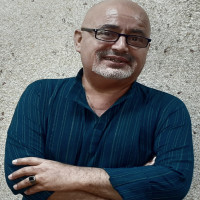
Editor of Turkish language
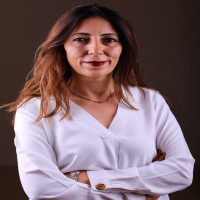
Editor of English language


Editoral board

Advisory board

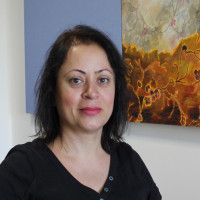
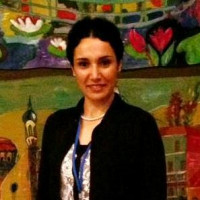

ARTS is licensed under CC BY-NC 4.0
PUBLISHER | JOURNAL BOARDS | INDEXES | PRICE POLICY | STATISTICS | MIAR | SHERPA ROMEO







